Welcome to one of the most active flamenco sites on the Internet. Guests can read most posts but if you want to participate click here to register.
This site is dedicated to the memory of Paco de Lucía, Ron Mitchell, Guy Williams, Linda Elvira, Philip John Lee, Craig Eros, Ben Woods, David Serva and Tom Blackshear who went ahead of us.
We receive 12,200 visitors a month from 200 countries and 1.7 million page impressions a year. To advertise on this site please contact us.
|

|
|
Old standards of measurements
|
You are logged in as Guest
|
|
Users viewing this topic: none
|
|
Login  | |
|

   
Njål Bendixen
Posts: 65
Joined: Aug. 25 2016

|
 Old standards of measurements Old standards of measurements
|
|
|
Hi Foro
I am beginning to think in a different way. When I examine an old instrument I want not just to document the instrument, but to try to understand what the original maker was thinking when the instrument was made. Therefore, I need to know what system of measurements the old makers were using, lets say in Spain in 1850. Also, I need to know there were regional differences in various parts of Spain at that time.
I know that the metric system was introduced in Spain in 1849. This does now mean that woodworkers adopted the metric system right away. The metric system was introduced in Denmark in 1912, yet I know from my father, who was an apprentice as a shipwright in the Royal Danish Naval Yards in the 1950s, that woodworkers in the 1950s in Denmark had begun to use the metric system, but at that time they still preferred to use inches. So I consider it very unlikely that Spanish luthiers were using the metric system in the 1850s.
I also know that different countries had different inches at different times, and that sometimes there were regional differences inside countries. The English inch was 25,4mm. The Danish inch was 26,2mm. My first cabinet maker teacher had the theory that the English had a smaller inch than the Danes because they drink too much tea. The French used the pied du roi, 27.1mm, which was introduced in Spain in 1700. Before that in Spain were regional differences as various provinces used different systems of measurements. For some reason the Danish later adopted the English inch. In Denmark the inch is nearly obsolete but for example water pipes are still sold in inches.
I also know that there were 3 systems for subdividing inches. The old system had regional variations but the system used both in France and Denmark was to divide the pied (foot) into 12 pouces (inch), the pouce into 12 lines (lines), and the line in to 12 points (twips). It is a misconception that we use apostrophes and quotation marks to designate feet and inches. The ‘ and the “ are actually small Roman numerals. Thus, 1 foot, 2 inches, 3 lines and 4 twips would be written as seen in the attachment at the bottom of this post.
In 1826 the Imperial system was introduced in Britain. This is the international system inch system used today. In this system the inch is divided into ½ inch, ¼ inch, 1/8 inch, 1/16 inch, 1/32 inch and 1/64 inch. What I do not know is if the Spanish ever adopted this fractional system. In Denmark this system was introduced at some point and Danish people today are generally not aware that there was an older system based on divisions of 12.
The third system is the decimal inch system dividing the inch into 1/10th, 1/100th and 1/1000th inches. This is an industrial system, and I highly doubt that Spanish luthiers used this system.
Using a system based on divisions of 12 or a system based on fractions makes a big, big difference. The fractional system favours divisions of ½, ¼ and 1/8 of an inch, but does not lend itself into easily divide an inch into 1/3. The system based on lines favours divisions of ½, 1/3, ¼ inch but does not lend itself to easily be divided inches into 1/8. So people using these different systems will tend to end up producing things with different proportions.
Is this important? Well perhaps only to me. If I measure a large Torres concert guitar with my metric ruler, then it will have a body length of some 487mm and a scale length of about 650mm. If I measure the guitar with my English inch ruler, then it will have a body length of 1’7” 3/16 and a scale length of
2’1”19/32. These numbers do not make much sense. However, if I measure the instrument with a pied du roi ruler then the body is EXACTLY 1’6” and the scale length is EXACTLY 2’. This I believe is not a coincedence.
So what I really need to know is what kind of rulers did Spanish woodworkers use and how did they subdivide the inches. I suspect that they used pied du roi rulers, but I do not know for sure. Also I have no idea if they used the old system of subdivisions buy 12 or they used the fractional system of subdividing the inch.
If any of you have any information regarding historical measurements in Spain I would be very grateful indeed.

Images are resized automatically to a maximum width of 800px
 Attachment (1) Attachment (1)
|
|
|
|
REPORT THIS POST AS INAPPROPRIATE |
Date Jun. 2 2017 19:01:44
 |
|

   
estebanana
Posts: 9351
Joined: Oct. 16 2009

|
 RE: Old standards of measurements (in reply to Njål Bendixen) RE: Old standards of measurements (in reply to Njål Bendixen)
|
|
|
I've worked on this problem as well around 2000 and then again in 2010- I think you are correct. The French influence on mensuration was strong, however I think there was a variety of regional systems for architectural building cabinet making, furniture etc.. and that guitar makers were a subset of those professions.
BTW I have not forgotten your hinoki, but this week was difficult to get it to the post office for a shipping price. Monday.
There is resistance to these ideas because the metric system has become so entrenched in guitar making since the 1960's - I can share some information with you privately, but let me check with the source first. I also arrived at the same conclusion when I began looking at the dimensions of older guitars and looking at records of older guitars such as the Torres instruments in the Romanillos catalog raisonne' -
The best information I could find came from the Berkeley library in CA, I don't obviously have access to it at the moment. I think what should happen to really research this is that a trip to Spain is in order to look at original source documents in city hall records, I think this requires some deep digging into record keeping in a sample of towns in Andalucia and then cross referencing the data to build a consensus on which measurement tools were used.
Such a study may already exist in Spanish in a scholarly work on mensuration, if a work comes to light I would sure like to know about it. But on the specific topic of what inch guitar makers used I have a hunch that the formal cabinet making guilds or professional association records are the key to this. In that body of record keeping, if such a trove exists, I think the best answers will be.
Knowing how sick guitar makers are and being that Sevilla was the hub of guitar making in Torres' FE, first epoch, I think the carpenters who made wood coffins and guitars were probably the same group of cohorts. Maybe the coffin shop was outside of town near the cemetery, but I doubt it. They had to put the body in the coffin, if one could afford a coffin, and then cart the body via procession from the interior of the city out to where the bodies were buried. Coffins must have been made on the trade sellers' streets, Calle Cuna? near the guitar makers. I have this surreal hunch that the guitar and coffin making trades had a revolving door. And that could also be the roots of a lot of jokes about Pied du Roi's and .....well anyway...Instead of precious over priced "church door" guitars, how about "coffin lid" tops- or coffin wood backs & sides - Cypress would have been a wood that coffins were made of. Left over ripped planks for coffin building would be just right dimensions for backs & sides to be cut from.
Be prepared to get a lot of skeptical push back or discouragement on this issue for contemporary makers, it's not a popular idea, although it is probably the truth.
I think we should tap Piwin to get busy and do this research. 
_____________________________
https://www.stephenfaulkguitars.com
|
|
|
|
REPORT THIS POST AS INAPPROPRIATE |
Date Jun. 3 2017 2:20:11
 |
|

   
estebanana
Posts: 9351
Joined: Oct. 16 2009

|
 RE: Old standards of measurements (in reply to Njål Bendixen) RE: Old standards of measurements (in reply to Njål Bendixen)
|
|
|
There are two parts to this -
Modern Museum science and documentation in Organology, the study of musical instruments, is conducted in the modern metric system as an international standard.
Within the greqter discipline of organology an understanding of the methods of mensuration of a particular time period and region is essential to know as much about musical instruments as possible. To study the methods of measure gives further historical context for an instrument. And also reveals a deeper understanding of the Ur models and methods of construction.
We keep modern records in the metric system, but we study the mensuration systems of the past in order to gain deeper insight as to how the first and the successive instruments of any lineage are developed.
A great example of this is the work done in the violin field, modern work is done in mm, but period work was done in oncia- when modern makers and researchers began to analyze violins based on the measurement of the Cremonese oncia, or the inch used in 16th to 18th century Northern Italy, new things were learned about tools and design ideas in the period. It also contributed to the de-bunking of certain ideas of 'mystical' ratios that were thought to be inherent in violin design. It made analyzing the systems used for vioiln layout to make more sense to moderns.
Yet when a museum curator, registrar, donor and violin maker meet to induct a historical violin into a museum collection they will document the instrument using the metric system. That way the insurance company, the future curators, and those players the violin is loaned to will all be on the same page to identify the instrument. The curators and researchers will hold two systems of measurement in mind when doing certain design evaluation and talk about period or regional standards of measure when it contributes intelligently to the elucidation of the description and understanding of that violin.
The classification of guitars in organological studies under the taxonomic heading of 'chordophones'. Sometimes I think they should be filed under 'chodeophones' -
_____________________________
https://www.stephenfaulkguitars.com
|
|
|
|
REPORT THIS POST AS INAPPROPRIATE |
Date Jun. 4 2017 0:00:10
 |
|

   
Richard Jernigan
Posts: 3430
Joined: Jan. 20 2004
From: Austin, Texas USA

|
 RE: Old standards of measurements (in reply to estebanana) RE: Old standards of measurements (in reply to estebanana)
|
|
|
quote:
ORIGINAL: estebanana
Norman, absolutely, planes and saws very likely, and English rulers too. But there's one more angle to consider on measurement tools. In old times when the industrial tools we know were not fully developed and distributed yet it was customary for craftsmen to make their own rules by ticking off marks with knife into a lath of hardwood. They copied the rulers of their masters...
In the early 1980s we hired a cabinet maker to remodel our kitchen. The house came onto the tax rolls in 1938. The plan was to rip everything out to the studs, take the floor down to the yellow pine 1 by 4s that lay atop the joists, and build a whole new kitchen.
My wife minored in interior design at university, and was good at drafting. She drew up a detailed plan and discussed it with candidate cabinet makers. In the end she hired a man in his mid-sixties, a descendant of Germans who immigrated to Texas in the 19th century to avoid the universal military draft of Bismarck and Kaiser Wilhelm.
He measured the entire existing kitchen using a lath, making cut marks and emphasizing them with a soft pencil. Then the old kitchen was torn out, the new oak parquet floor was laid, and the cabinet maker set to work.
My wife had drawn a lazy susan in a lower corner cabinet, to make better use of the space. The cabinet maker was non-committal about building it. Eventually we were invited to have coffee at his house one evening. His wife served traditional German cookies.
After a decent interval we were taken to the shop out back, and shown a working mockup of the lazy susan, made from scrap lumber. The cabinet maker's attitude seemed to be that he was now willing to entertain the idea. I had mentioned that you could buy one ready made, but he was unwilling to risk compromising the quality of the work.
My son still lives in that house. I admire the cabinet maker's beautiful and precise work every time I visit. The only problem I had with him was due to my frequent business travels. Every time I left, I waited until the cabinet maker showed up promptly at his usual time. Then we would have a brief conversation about the work, ending with my saying, "Mrs. Jernigan is the boss. You need not delay any decisions until I come back."
RNJ
|
|
|
|
REPORT THIS POST AS INAPPROPRIATE |
Date Jun. 5 2017 2:08:32
 |
|

   
Njål Bendixen
Posts: 65
Joined: Aug. 25 2016

|
 RE: Old standards of measurements (in reply to Njål Bendixen) RE: Old standards of measurements (in reply to Njål Bendixen)
|
|
|
My point is:
I do not just want to document a historical instrument. I want to attempt to determine what the original maker was thinking. We all use number that are convenient, unless we have a specific reason not to. One thing I am certain of though. Nowadays people tend to think in terms of absolute numbers. In the past it was much more common to think in proportions.
People often offer flamenco guitars with different scale lengths. Typically a modern maker may offer short, medium or long scale lengths, and typically this could be 650mm, 660mm and 670mm. To us this is so normal that we do not even think about it; but why always easy round numbers? Why do we not use scale lengths of for example 648mm, or 671mm, or 662mm. OK, some modern makers do use scale lengths that are not round numbers, but most modern makers do use round numbers. We do this just because it easy. The makers of the past did the same, they used numbers that are easy.
It is a coincidence that Torre's favoured scale length of 2 French feet (649,66 mm) is so close to 650mm that people assume that the scale length indeed was originally intended to be 650mm.
This reminds me of violins. A typical Strad violin has a body length of between 355mm and 356mm. This correlates to 14 English inches, which is exactly 355.6mm. Then at some point Hills publishes a drawing of a baroque violin where the neck lenght is shown as being 5 English inches long (127mm) and this then becomes the modern standard for baroque neck lengths. Thus a standard has been created that never existed in the past. I am though 100% sure that the Cremonese violin makers if the 14th and the 15th centuries did not think in English inches.
|
|
|
|
REPORT THIS POST AS INAPPROPRIATE |
Date Jun. 5 2017 22:54:17
 |
|

   
constructordeguitarras
Posts: 1675
Joined: Jan. 29 2012
From: Seattle, Washington, USA

|
 RE: Old standards of measurements (in reply to Njål Bendixen) RE: Old standards of measurements (in reply to Njål Bendixen)
|
|
|
I use my micrometer, which is in "metric inches," for measuring thicknesses of guitar components, such as soundboards, sides, backs, neck shafts, bridges and braces. I thickness backs, for example to 0.100" or 0.095". It's not complicated, nor is it less precise than using metric units based on the meter. And I have tables on hand for converting to mm when I want to. So I know that 20 mm of neck thickness at the first fret equals 0.79". No big deal.
But that is interesting about the whole numbers of French feet and English inches.
_____________________________
Ethan Deutsch
www.edluthier.com
www.facebook.com/ethandeutschguitars
www.youtube.com/marioamayaflamenco
I always have flamenco guitars available for sale.
|
|
|
|
REPORT THIS POST AS INAPPROPRIATE |
Date Jun. 6 2017 2:14:07
 |
|

   
estebanana
Posts: 9351
Joined: Oct. 16 2009

|
 RE: Old standards of measurements (in reply to Richard Jernigan) RE: Old standards of measurements (in reply to Richard Jernigan)
|
|
|
quote:
He measured the entire existing kitchen using a lath, making cut marks and emphasizing them with a soft pencil. Then the old kitchen was torn out, the new oak parquet floor was laid, and the cabinet maker set to work.
My wife had drawn a lazy susan in a lower corner cabinet, to make better use of the space. The cabinet maker was non-committal about building it. Eventually we were invited to have coffee at his house one evening. His wife served traditional German cookies.
After a decent interval we were taken to the shop out back, and shown a working mockup of the lazy susan, made from scrap lumber. The cabinet maker's attitude seemed to be that he was now willing to entertain the idea. I had mentioned that you could buy one ready made, but he was unwilling to risk compromising the quality of the work.
That is great story because it not only illustrates the point of using laths to demarcate space and dimension, but you have a work of craftsman's beauty to enjoy and pass to your kids. I can imagine the German cabinet maker came from the New Braunfels area where the German immigrant workers landed and began a community South of Austin.
Even today a good stair builder or custom cabinet maker or carpenter working on complex wood trim jobs or old houses needs to use templates now and then. Carpenters now often keep a hot glue gun in the tools collection and use to to frame together thin plywood strips ripped down 3" or 4" wide. A Japanese saw, pencil, razor knife and a steel ruler are used to fit a template into a niche or shape that will receive a tightly fit bit of wood work. Templates built up with a glue gun and ply are commonly used to calculate things like stair landing shapes and foot prints for cabinets that fit into old buildings with skewed walls, etc. Lath templates and '3,4,5' trick can be used to lay out anything from a small house to a pyramid. Until good lazer levels became cheap about 15 years ago, 3,4,5 and templates were common layout tools and ideas. I still would lay out a house with patterns, carpenters square and 3,4,5.
3,4,5 enables you to create a 90 degree angle with the construction of a right triangle. The construction can be done with any type of measurement unit so long as they are uniform. One side is 3 units long, anther side 4 units long and pulling them together with one side 5 units long creates a 90 degree angle where sides 3 and 4 meet and make a corner. It's how you lay out the walls of a house or pyramid an create them square.
This is important because it is trick #1 in preindustrial instrument building when the luthier wanted to create a 90 degree angle if there were no industrially made T -Squares, squares or triangles available. Say you wanted to make a triangle out of a plank of wood so you could hold it up to your ribs to see if they are 90 off the solera....well you take the plank, rule out 4 units with a ruler, put a nail right at the ends on 0 and 4. Tie a length of string nail to nail. Tie a another length of string at each nail at 0 and 4. Measure out 3 units on string and put a knot or pencil mark at three. Measure out 5 units and make a mark. Pull 3 and 5 taut and together until they cross at the 3-5 point and drive a nail in there. Take the ruler and hold it against the nails and mark out a right triangle with a 90 corner. Carefully cut it out with your saw and plane to the line to clean it up and you have a triangle to check your ribs. That is how instruments were made before everyone could afford metal tools.
Older makers did tend to lay things out in rounder numbers on purpose, there is a lot of evidence for this in studies made on extant instruments with measurement systems from the periods they were made in. Ratio and proportion are very evident in design theory and practice. However a lot of the mystical ideas about numbers and proportion don't hold up under empirical scrutiny. A lot of the mystical stuff is just baloney. There are however a lot of ratio an proportional standards to be found on the Ur models of guitars. One of the most obvious to make an example is the Spanish concept of the bridge in the time of Torres and after. It was set on 2-3-2 ratio and used a measurement pretty close to a modern standard inch.
The bridge has a 2-3-2 proportion and hangs pretty closely to 7" to 7- 1/4" meaning there is 2 in of arm or wing, then 3 in. of saddle mound and another 2 in. of wing. Why was it set? I know why, but I ain't telling. Just yet. And there are several other geometries on the Torres guitar that translate into proportional relationships. Some ar staring makers in the face, but don't perceive them until they begin to reason it out or it's shown to them.
This why understanding the conceptual underpinnings of the history of design is important. A lot of ideas inherent in voicing the guitar as understood by the 19th century and early 20th century makers lie in the proportional values and why those designs were arrived at. If we transliterate those groups of measurements and proportional relationships into the metric system we lose track of the original intent. It does not mean a person can't build a fantastic guitar working from a metricated set of plans, but it does mean there is a loss of knowledge as to why the proportional relationships were created and why. There is not only historical and intellectual value in that knowledge, but also practical guitar voicing knowledge.
And in the end, it's important to stay in touch with original intent even if you go far afield, there has to be reference point to the past, or eventually the intent will be lost. In the case of violin making a lot of the intent was lost and had to be re-understood via backwards engineering the violin design with the oncia until the mission parts of the Cremonese style of layout were rediscovered. Guitar makers are much closer in history to the Ur sources, so why risk losing the meaning of the original intent?
Someone really needs to put together a book of essays by different Spanish guitar authorities that deals with this subject in depth. Romanillos really did a of work, but he missed some key issues and proposed a not so useful square cm of soundboard aggregate, that does not really serve much purpose. But I think a new round of essays on the subject of design and original units of measurement and related topics is long overdue. Were going to lose the concepts that the pre-internet generations learned unless more of it gets recorded. Unfortunately I'm not in position to do more research nor am I an authority with any weight or pull in the business, but I sure recognize the importance.
_____________________________
https://www.stephenfaulkguitars.com
|
|
|
|
REPORT THIS POST AS INAPPROPRIATE |
Date Jun. 6 2017 6:08:55
 |
|

   
estebanana
Posts: 9351
Joined: Oct. 16 2009

|
 RE: Old standards of measurements (in reply to Njål Bendixen) RE: Old standards of measurements (in reply to Njål Bendixen)
|
|
|
This is an exterior design analysis that shows proportions between features.
The bridge is 7" wide, the top is twice that at a 14"
Bridge is divided into a 2-3-2 ratio 2" of wing, 3" of saddle, 2" of wing.
The top upper bout at the horizontal middle of the sound hole is 3 sound holes wide.
The waist is determined by dividing the body length in half and making two squares that are half the body length to form a rectangle. The width of the rectangle is waist width.
The lower bout along the horizontal of the saddle is 4 equal units that are half the width of the bridge- 3.5 inches. 7 plus 7 is 14 , divided by 4- there's a reason for that.
The string to string width at the saddle roughly correlates to neck width at body join. This is more close on smaller Torres instruments, but the format remains the same as it exaggerated on later designs.
The layout is not accidental. An old rule for finding the width of a top on a lute is to use the sound hole width to determine the width of the side to side at the center horizontal axis of the sound hole. For example if the sound hole is 3"wide the width at that section of the bout will be based on 9" - On the Torres model this thinking could be vestigial design theory from lute making handed through guitar makers. Remember in 1840 this information was passed from teacher to student by rote.
If you take a mature Torres plantilla and analyze the dimensions with these proportions in mind you get very close to the model and see why the concept is cohesive. The plantilla outline is a freehand drawing, but it hits general horizontal axis points determined by proportions of width. Torres backs are slightly shorter in length that the later Madrid school work so the back as two stacked squares which make a beautiful rectangle, the squares are more perfect.
The Spanish -Torres guitar basic proportion is this:
Upper bout three soundholes wide
Waist half the length of the back
Lower bout at saddle horizontal, two bridges wide.
There's much more when you look at the total length of the guitar and then compare inner against outer lay out. oine of it is accidental, it's got a logic that is reproducible by internalizing the proportional underpinnings. And couple that to the concept that the units of measure in the pre-metric world are based on proportion of the human body and you find the guitar is proportional in scale to the body. Ok, that is esoteric, but interesting. When you superimpose the metric system over the concept the whole thing goes out the window because the proportions no longer ring out in simple ratios that can be remembered and drawn with a pencil, a ruler, a compass and the 3,4,5 rule of geometry.
There's more...but I always get called an **** for pointing this out, so you decide.
_____________________________
https://www.stephenfaulkguitars.com
|
|
|
|
REPORT THIS POST AS INAPPROPRIATE |
Date Jun. 6 2017 11:40:57
 |
|
 New Messages New Messages |
 No New Messages No New Messages |
 Hot Topic w/ New Messages Hot Topic w/ New Messages |
 Hot Topic w/o New Messages Hot Topic w/o New Messages |
 Locked w/ New Messages Locked w/ New Messages |
 Locked w/o New Messages Locked w/o New Messages |
|
 Post New Thread
Post New Thread
 Reply to Message
Reply to Message
 Post New Poll
Post New Poll
 Submit Vote
Submit Vote
 Delete My Own Post
Delete My Own Post
 Delete My Own Thread
Delete My Own Thread
 Rate Posts
Rate Posts
|
|
|
Forum Software powered by ASP Playground Advanced Edition 2.0.5
Copyright © 2000 - 2003 ASPPlayground.NET |
0.09375 secs.
|


 Printable Version
Printable Version











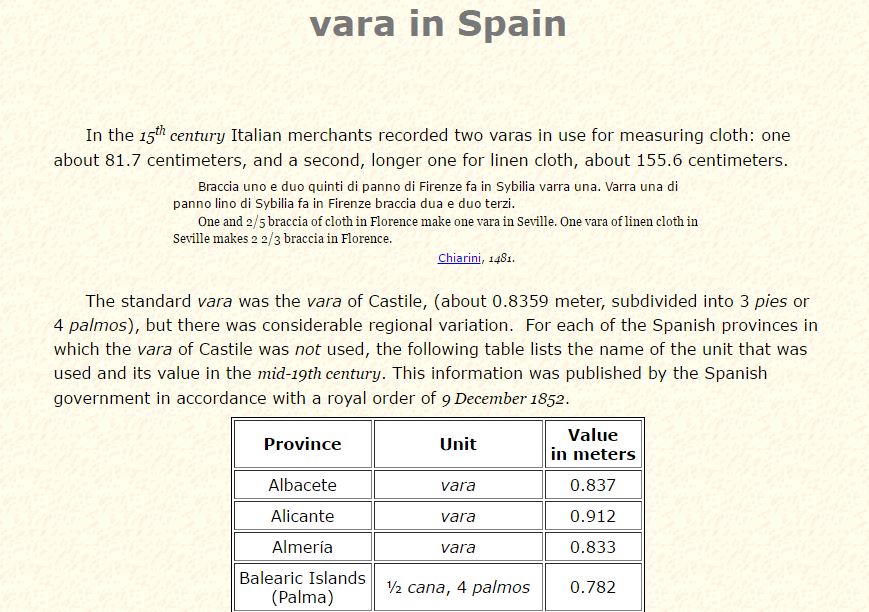
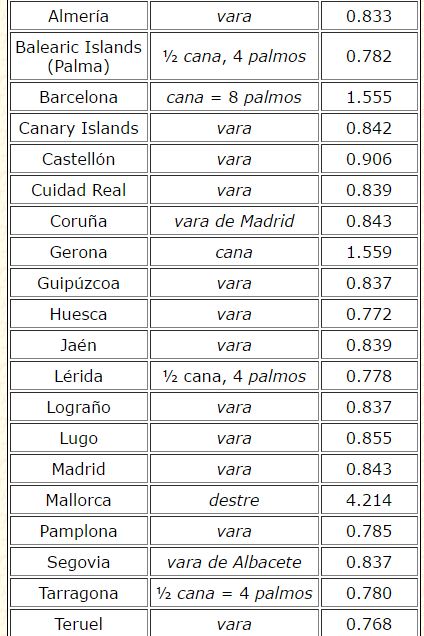
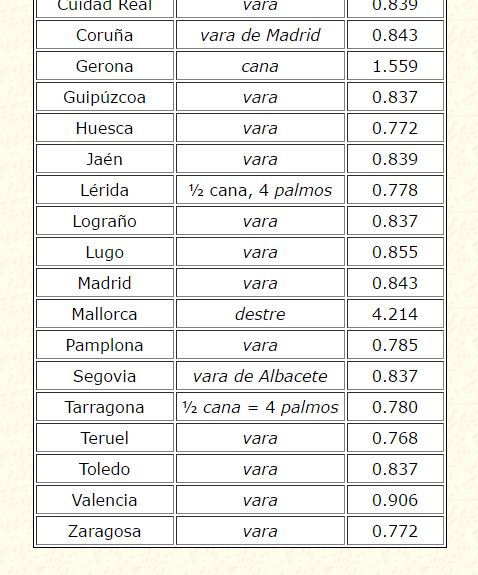

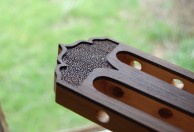
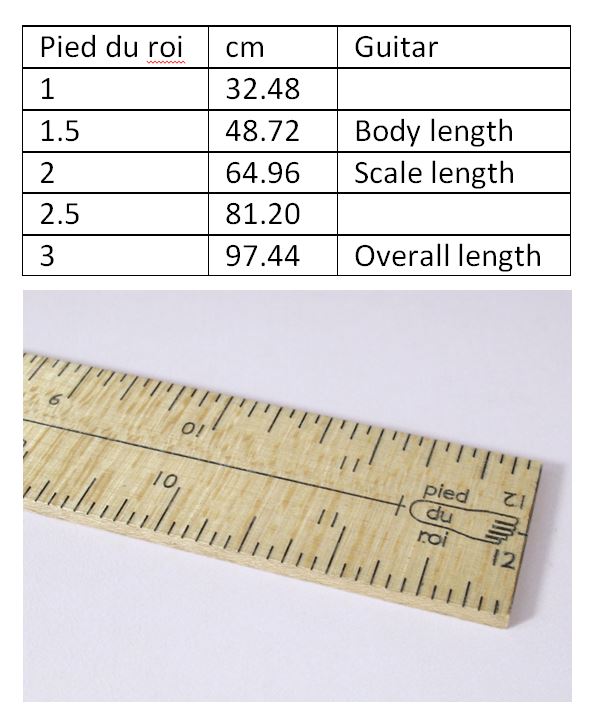
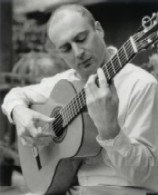
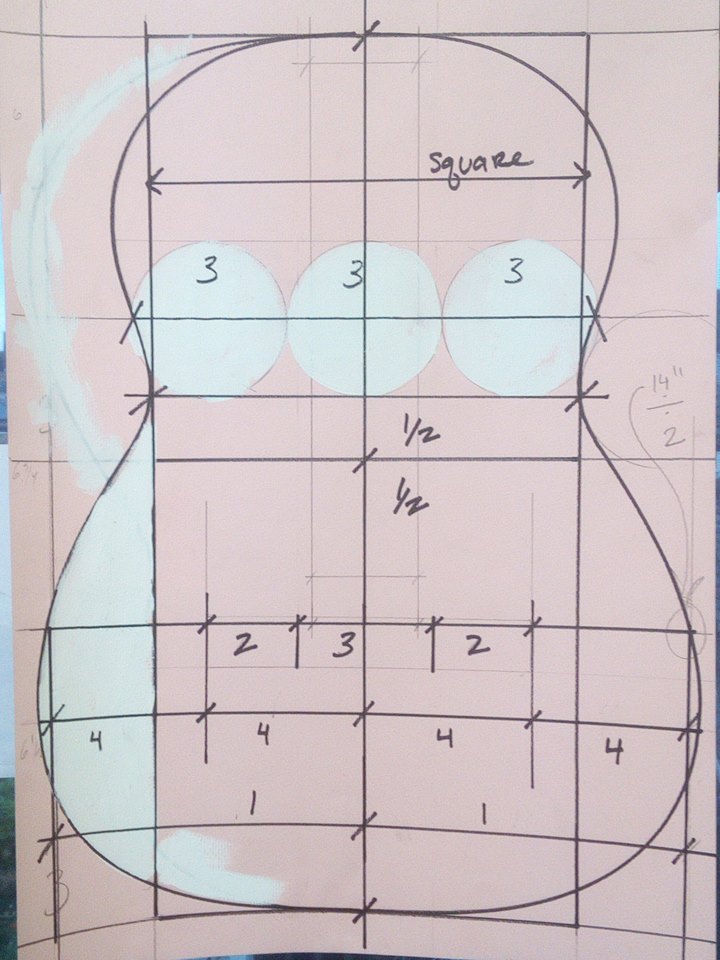
 New Messages
New Messages No New Messages
No New Messages Hot Topic w/ New Messages
Hot Topic w/ New Messages Hot Topic w/o New Messages
Hot Topic w/o New Messages Locked w/ New Messages
Locked w/ New Messages Locked w/o New Messages
Locked w/o New Messages Post New Thread
Post New Thread